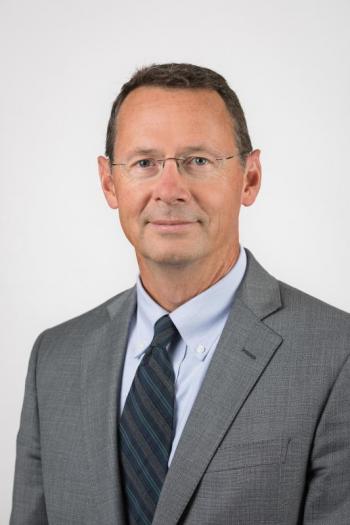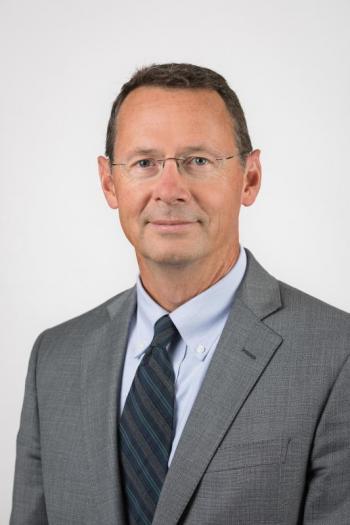Looking Back at Two Years of COVID-19
It was two years ago this past weekend that the fear of the coming pandemic manifested itself in the form of Maine’s first documented case of COVID-19. Since then, more than 227,000 people in Maine have been infected and more than 2,000 have died. As we enter the third year of the pandemic, with the receding Omicron surge giving us hope for an end to the pandemic, it seems appropriate to look back at what we’ve been through so far and take stock of all we learned.
Access to health care matters
In the beginning, amidst the uncertainty of a new and potentially devastating pandemic, we erred on the side of caution and shut down our facilities to all but emergency procedures and inpatient medical care in the interest of keeping our patients and care team safe. However, we quickly learned that when people have limited access to health care, the community suffers. And more than we anticipated. This is evident in mortality rates. Across the country, we have seen an increase in the total number of deaths. Most of those deaths were due to COVID infections although many were not directly attributable to an actual COVID infection. Looking back, we now believe a significant part of the increase is due to the loss of access to basic health care, especially routine screenings designed to identify emerging conditions early enough to be treated. If we had to do it over again, we would likely keep our offices fully open.
We’re really good at this
The ability of care team members at PBMC and WCGH to effectively mobilize when the vaccines were approved in late 2020 was just staggering. Our teams set up two high-volume vaccination clinics in just 10 days. That included identifying locations, negotiating leases, ordering vaccines, scheduling staff and volunteers, and communicating broadly. Pharmacists trained the clinical teams and dozens of community volunteers, our facilities team built out the vaccination sites and our nutritional services team made hundreds of additional lunches to keep the teams fed. It is not an exaggeration to say it was an all-hands-on-deck moment. Over the course of the next few months, we devliered more than 60,000 vaccines to people from Knox and Waldo counties. These clinics, organized so well on such short notice, were a remarkable achievement that reinvigorated our sense of purpose and instilled our community with hope. More importantly, it saved countless lives.
Masking works
In the first weeks of COVID, very few people were focused on masking. However, once we learned that the disease was transmitted through airborne droplets, the experts and epidemiologists recommended masking for everyone. Thankfully, it has been remarkably effective, and not just with COVID. You might recall that, as we approached our first winter with COVID, we were concerned about what might happen once we hit flu season. In fact, the flu barely showed up. Neither did the common cold. The reason: Masking proved incredibly effective at reducing the transmission of all types of airborne pathogens.
Here’s a more concrete example. With Omicron, the current dominant COVID variant, a person is most infectious two days before they have symptoms. This means we have had a large number of care team members working in the hospital fully infectious before they even knew they were sick. And yet, transmissions of COVID within the hospital have been extremely rare. This is further proof that masking works.
The cumulative lesson is that masking is a valuable strategy when applied consistently. As one of several tools used throughout the pandemic, masking saved thousands of lives, especially before there was wide-spread access to vaccines.
Kids need to be in the classroom
The negative consequences of shutting down our schools during the pandemic has had significant and long-lasting negative repercussions. We knew early on that children were far less likely to become seriously ill from COVID and that their chances of dying from it were extremely small. We also knew that for most children, remote learning negatively impacted their education. Importantly, video learning does not deliver the in-person social interactions that are so critical for a child’s development. It’s unclear how far behind our kids are academically and socially, but from my perspective the impact has been far greater than any of us expected. If faced with a similar situation in the future, we should do everything possible to keep children in the classroom.
Behavioral health is our shadow pandemic
The pandemic has had a huge impact on people who were already struggling with depression, substance use disorder and other mental and behavioral health challenges. We have seen this in our Emergency Department, where the number of behavioral health patients has risen dramatically since the beginning of the pandemic. As effective as social distancing and masking have been epidemiologically, these measures have also increased the level of stress and isolation in all of our lives. This was enough to push many into crisis. The pandemic laid bare their suffering and demonstrates how critical it is for our state to appropriately fund behavioral health care.
The National Guard inspires
For a period of time spanning January and February of 2022, 28 members of the National Guard pitched in at PBMC and WCGH, providing a critical helping hand as we faced staffing challenges in the midst of another COVID surge. The National Guard did more than just help carry the load these past few weeks. I was profoundly struck by how professional, respectful committed to their mission they were. They reminded us of the power of working together toward a common goal and the impact that we can have when we work in the service of others. In this sense, they provided hope and inspired us. For this we will always be grateful.
The value of the MaineHealth system
When we furloughed many care team members early in the pandemic, we were able to continue paying them to ensure that they would be ready to return when the time was right. We could do this only because of the financial resources available to us as part of the larger MaineHealth system.
When every hospital in the country was scrambling to secure personal protective equipment (PPE) for their care team members, MaineHealth was able to leverage its size and vendor relationships to ensure there was adequate PPE for every one of its local health care systems, including PBMC and WCGH.
Being part of a larger system of hospitals also allowed us to move patients within the system to optimize their care. This allowed MaineHealth hospitals with capacity to take in patients transferred from other hospitals in the system that were experiencing spikes in COVID patients. As a result, our patients continued to receive the best care possible throughout the pandemic.
These are just a few examples of how being part of a larger system positioned us to serve our community better than we could have as stand-alone hospitals.
As we pass this two year mark, the Omicron surge is waning. We all could use a break to catch our breath and push aside the stress of pandemic living. We will now be learning to live with COVID as an endemic like the flu, rather than the pandemic we have battled. However, we have been here before and have seen new variants emerge, so we must remain at the ready. But we do so knowing that we now have a highly vaccinated population, improved treatments for those who do become infected and better systems for monitoring the disease. As a result, we are stronger and more prepared for what comes next.
Mark Fourré is president of Pen Bay Medical Center and Waldo County General Hospital
Pen Bay Medical Center and Waldo County General Hospital are part of MaineHealth, a nonprofit integrated health system consisting of eight local hospital systems, a behavioral healthcare network, diagnostic services, home health agencies, and more than 1,600 employed and independent physicians working together through an Accountable Care Organization. With more than 19,000 employees, MaineHealth is the largest health system in northern New England and provides preventive care, diagnosis and treatment to 1.1 million residents in Maine and New Hampshire. For more information, pbmc.org. or wcgh.org.
###

























